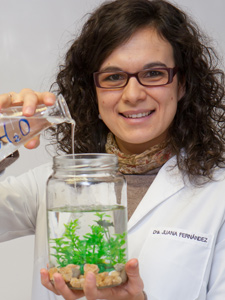Juana Fernández Rodríguez, Professor of Environmental Sciences, University of Navarra, Spain Degree
How much is the water we use in our homes worth?
 Annually the high school National Statistics Institute (INE) publishes figures on average water consumption in Spanish households. The 2015 report detailed that the expense per inhabitant per day was 130 liters in 2013 (the data are offered with two years of delay), 3.7% less than in 2012. That decline in the waste of natural resources was received as good news, until the 2016 report , on consumption in 2014, reconfirmed the increase in expense, with 132 liters of average consumption per person per day, 1.5% more than in the previous year.
Annually the high school National Statistics Institute (INE) publishes figures on average water consumption in Spanish households. The 2015 report detailed that the expense per inhabitant per day was 130 liters in 2013 (the data are offered with two years of delay), 3.7% less than in 2012. That decline in the waste of natural resources was received as good news, until the 2016 report , on consumption in 2014, reconfirmed the increase in expense, with 132 liters of average consumption per person per day, 1.5% more than in the previous year.
To become aware of how to tackle this excessive expense , we should first detail how and where most water is consumed in Spanish households. The greatest waste is logically in the bathroom. This is followed by the kitchen. By way of example, according to Ecologists in Action (2006), filling the bathtub can mean a Issue of 150 to 250 liters of water, while a shower of 5 or 10 minutes consumes 50 to 100 liters. On the other hand, flushing the toilet uses between 8 and 10 liters of water, and keeping the faucet running -for example, while brushing our teeth or shaving- uses 5 to 10 liters per minute, which can mean a total of 50 liters in 5 minutes.
In the case of the kitchen, consumption figures can also be surprising. Putting the dishwasher on full load entails the use of 10 to 30 liters of water -while washing the equivalent dishes by hand would imply a average 70 liters (Organization of Consumers and Users, OCU 2012)-. And putting on the washing machine -one of the appliances with the highest water consumption-, requires between 35 and 75 liters in full load. Additionally, in the home there may be other sources of water consumption, such as filling the swimming pool (from 20,000 to 40,000 liters), watering the garden (about 4-6 liters/(m2/day) or washing the car with a hosepipe (from 150 to 400 liters). In addition to all this, there is the waste when the installations are not in good condition: a dripping faucet can lose between 30 and 100 liters per day.
However, the figures we handle refer to household consumption and, on many occasions, to expense per person per day. If we were to extrapolate these figures to a family, a block of apartments, a city, an autonomous community or a country; if we were to take into account periods of a week, a month or a year, the resulting numbers would be so enormous that it would be difficult to get position of the scale of the problem.
Water is a natural resource on which the balance of ecosystems, but also of urban centers, depends. It is also used in a multitude of processes, not only domestic but also industrial. We could say that our lifestyle is closely linked to the use of water, since we need it to carry out numerous daily activities. As a consequence, its economic cost has been increasing in recent years. Specifically, its price has risen by 5.8% between 2012 and 2013 and by 3.3% between 2013 and 2014, reaching 1.89 euros per cubic meter (INE, 2015). Despite this economic increase, the price of water does not reflect its value, which on many occasions could be incalculable.
For all these reasons, caring for and preserving water is a moral duty. Even more so when the market offers us many solutions aimed at containing its expense, such as installing water softeners on taps, using efficient cisterns, replacing habits and changing the bath for the shower, using appliances loaded to the maximum and in the washing program required, and so on. These measures, however, will be meaningless if we do not become aware of what it means to have quality water at the moment, and of the damage we cause when we waste it. This is the goal of the World Water Day we are celebrating today.
